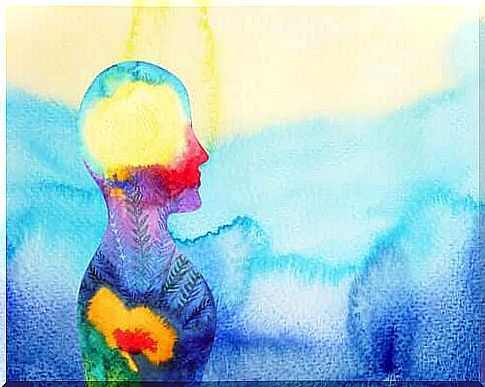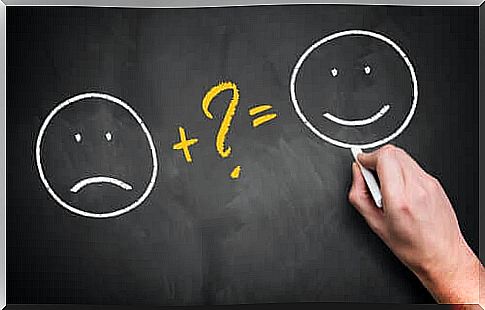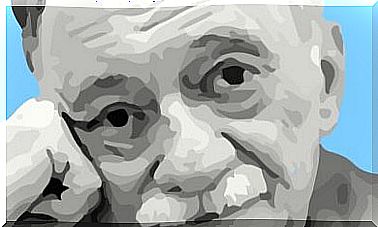Positive Psychology And Its True Revolution

Few branches of psychology have become as famous as positive psychology. With it we began to become aware of the importance of our emotions. At a certain point in Western history, after the dark Middle Ages, with the Enlightenment, reason began to prevail over faith. The logic of the Enlightenment elevated science and remembered that neither the earth is the center of the universe nor man is the center of nature.
Nietzsche symbolically killed God (“God is dead”, which, paradoxically, although the tense suggests this, does not mean that Nietzsche thought that God actually existed). Thomas Hobbes then stated that the worst enemy we have at home, with the concept of homo homini lupus . That is to say that somehow it would be better for man for the human species to become extinct.
Following this common thread, man dead, weakened, observed with a magnifying glass, like a grain of sand in an immense cosmos, psychology turns its gaze to our most intimate mechanisms: emotions. And, indeed, the 21st century seems to be the century of emotions; of multiple intelligences, it is true, but above all of the emotional one. The one that helps us to fight against that wolf that lives in the people who accompany us, but above all against what lives within us.

A different look in the eyes of positive psychology
Perhaps the greatest success of psychology has been that it has given a change to what is most troubling us. I’ll explain. Anyone of you who has studied psychology at university – and therefore also methodology – will remember that one of the worst headaches that can affect a researcher are atypical cases (outliers). We are talking about those cases that go very far from expectations, taking into account different sources, such as the same study tools or literature.
Many researchers see them as a source of error. There is, in fact, an enormous amount of statistical procedures – don’t even imagine how complex they are – to ensure that these values interfere as little as possible with the results of a study. One of the causes most often underlying this anomalous, unexpected data is a mediation or coding error (when passing data to the statistical program).
A practical example
Let’s take an example. Let’s imagine that a psychologist performed an exam to measure the anxiety of a sample of people. There are 15 questions, each of which can be given a score of 1 or 0, so that the maximum score of the exam is 15. However, once we enter the data on the computer, we realize that a person has obtained a score equal to 113. Obviously this is impossible. The most likely thing is that we were wrong in transcribing it.
In some cases this conclusion is not so obvious. If we had transcribed an 11 instead of a 1, the data in question would not have caught our attention: at first glance, there would have been no atypical case. Let’s take a small step forward and complicate things: let’s imagine that all but one people got a score between 2 and 5. Yet, our atypical person gets a score of 14. Strange, right?
What to do with this 14? Well, as we said before, statistics have generated an enormous number of solutions for our atypical value (think that, as my esteemed graduate program coordinator said, statisticians live off this) and it has done so both at the univariate and at the multivariate level. Most of them are moving in one direction: to limit their influence as much as possible when it comes to making comparisons.

Positive psychology: studying happiness where it is present, not where it is lacking
At this point, let’s put the methodology aside to explain why so-called positive psychology has been a revolution. His object of study was not the predictable scores, those that hovered around the average, but those atypical values so much diminished.
Yes, you will tell me that I am wrong, that psychology had already done all this. He had already studied those patients who, for example, scored much higher on an anxiety scale. Or who, in the phase of mourning, entered an acute depression. What he did not do thoroughly, however, was to study the atypical “positive” cases. For example, those who faced with a potentially anxious situation exhibited moderate levels of anxiety or those who recovered quickly after a potentially traumatic event.
Positive psychology told us: “well, we have to start studying those atypical people anyway from a point of view that until a few years ago had been ignored: that of health, rather than that of disease, isolated to minimize the ‘error”. At the same time, this change represented a strong wind of hope. A way of saying: we also have examples that tell us that it is possible, that the anomalous goes far beyond the disease or pathology, that there are anomalies that we would like to be more common.
Do we react to perceptions or to reality?
One of the pillars on which cognitive psychology is founded is that which argues that we do not react to reality, but to what we perceive.

If we see a tiger approaching and do not detect any obstacles that prevent it from launching at us, we tend to go into panic mode. Yet, this does not mean that that obstacle does not exist: the tiger may have a chain around it that prevents it from sprinting towards us, so much so that an attack is impossible. Despite this, our heart begins to beat strongly.
Working on what is perceived in the case of the tiger is a big disadvantage. However, positive psychology tells us we can turn this distance in our favor, this filter that we need to process what comes to us through our senses. How many challenges have you faced with the feeling that all was lost before you started? In how many challenges did the initial momentum help you to overcome the most complicated obstacles? Well yes. To close the circle, it is positive psychology and emotions that make us extraordinary.








